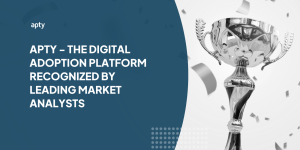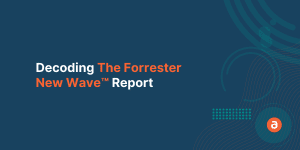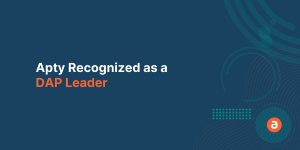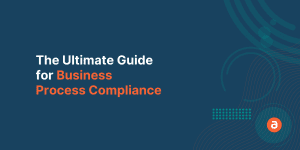We are living in uncertain times. Businesses are forced to re-write their business operations and plans to accommodate the unpredictability of the current world. Immediate is the word of the hour and digital medium is enabling this transition. Old methods are not sustainable anymore and businesses should be prepared with a strategy to handle digital disruption to fuel their growth.
Fewer than 12% of the companies are in the fortune 500 lists of 2017 when compared to the list of 1955. Over 88% of the companies went bankrupt, merged, or have fallen from the fortune 500.
Businesses in the 1965’s S&P index stayed in the index for an average of 33 years but by 1990 that period reduced to 20 years. This number will probably reduce to 14 years by 2026, according to Innosight’s 2016 report. This shows that markets are disrupted at an exponential rate and with each passing year this only going to get worse.
Digital disruption can happen at any time, in any industry, and its impact on an enterprise can be adverse. Digital disruption cannot be predicted. Disruption cannot be predicted and businesses should not take lightly the importance of digital disruption. One may estimate that in a worst-case scenario, disruption can occur a year or 5 years ahead in the future.
One may also doubt the severity of the disruption, assuming that nothing drastic will happen for at least a decade. However, the truth of the matter is that your business is at risk of disruption anytime in the next 5 months. So, rather than trying to predict and preparing for disruption, it is ideal to first be prepared and wait for the right moment to leverage its several benefits.
In this blog, we are going to explore the impact and importance of digital disruption and different ways to manage it.
What is Digital Disruption?
Digital Disruption is the fundamental shift in business models, industry, market, process technologies, expectations and behavior of consumers caused because of new digital products, services, and businesses.
These innovative new businesses, technologies, and services can impact the current offering in the industry and disrupt the way traditional businesses within the industry function. Sudden disruption makes the companies either phase out of business or empowers them to focus on changing their modus operandi by re-evaluating their approach and outcomes.
Businesses have to understand the importance of digital disruption and be prepared for what may come. The first step is to understand how digital disruption will impact a businesss.
Digital Disruption’s impact on Business
We already know that digital disruption has a severe impact on businesses but how does it impact them? What are the factors that influence it?
Well, technology is the major driving force behind these disruptions. To be more specific, these are the three main causes of digital disruption: dematerialization, automation, and value proposition.
Dematerialization is the substitution of physical products with digital ones which simplify business processes. Dematerialization has reduced the marginal cost of production drastically, it has opened new methods or channels of communication, and it has drastically brought down the transactional and operational costs.

Automation is the process of improving the efficiency of tasks to increase productivity of employees, customers, and other stakeholders. Digital tools help organizations automate repetitive tasks and enhance the efficiency of company resources. It not only allows organizations to focus on higher priority tasks but also helps them save time and money.
The value proposition is changing rapidly especially since new companies have come with innovative ways of conducting business. They are challenging the traditional business models and forcing the current ecosystem to transform the way business is conducted. Today companies have data by their side to understand what consumers and employees want. This data can be leveraged to tweak, revamp, or outright change the business model to satisfy the modern demand.
All these three causes of digital disruption clearly show how it has paved way for digital innovation and how it has created a simplified way of carrying out operations that not only benefit the organization but also the customers.
Why Digital Disruption is Important?
Digital Disruption allows companies to analyze areas of improvement, enhance their products and services, understand consumer needs, and unearth existing opportunities to fuel business growth.
Digital disruption is often perceived negatively but in reality, it is a great advantage for businesses that understand and embrace it.
3 Key Reasons Why Digital Disruption is Important
a. Makes the Workforce Better
Investing in modern applications to make the workforce better is one of the most important aspects of Digital Disruption. But that alone will not guarantee success. The workforce must use the deployed applications and tools efficiently.
Businesses can shell millions of dollars on training and onboarding employees on new applications. The ground reality is that these investments will not show any immediate result and it takes up the company’s time and resources. To survive disruption, you need a tool or solution that can help you do both training and onboarding immediately and efficiently.

Digital Adoption Platforms are tools that can help in this aspect. Organizations can analyze workflows and find how employees are using the applications, where they are struggling, how long it takes to complete a task, and if they are able to achieve their goals using it.
Once you know the answers to these questions, creating walkthroughs, PDFs, PPTs, videos, and other supporting content will only take a few days. You can seamlessly create contextual walkthroughs and training content for each job function at your company.
Irrespective of where the employees are in their training and onboarding journey, Digital Adoption Platforms like Apty guide them through the application as it houses all relevant training content and onboarding workflows. It increases the engagement rate and thus meets the expectations of the CIO by ensuring successful Digital Transformation.
b. Enables Growth
Digital disruption pushes companies to move out of their comfort zone and embrace technology to fuel Digital Transformation initiatives. Organizations that consider this an opportunity for growth, evolve and the rest eventually perishes.
The world is becoming more and more digitally connected. Technology is slowly but steadily taking the center stage and its influence on businesses and the daily lives of people is increasing.
Artificial Intelligence (AI) and Machine Learning (ML) technology are helping to understand the state of healthcare, agriculture, climate, and consumer behavior to create a better solution.
These technologies are disrupting business models of different sectors but helping them understand the industry, its problems, the people involved, and its processes like never before. Digital Disruption is a two-way sword but those who embrace it and apply it, reap its benefits.
c. Enhances Customer Satisfaction
Today’s customers understand that technology if leveraged to its full extent, can help them achieve their goals easily. They are more concerned about the value that your product provides rather than your company’s brand value. Customer behavior in the digital economy is dynamic and is influenced by changing tech.
In such a scenario, a business that understands its customer through data, uses analytics and draws meaningful insights to satisfy the needs of customers in a far better way. In the past, we have seen companies like Apple, Amazon, Google, Netflix, and Uber who understood customer needs and provided an apt solution that completely disrupted their respective industries.
Their competitors have tried to replicate their model but hardly a few of them were able to match the capacity at which these early disrupters performed.
Digital disruption’s impact on your business can be a positive one if you have planned and prepared for it.
Related Read: How does DAP simplify your digital enablement strategy
Some Examples of Digital Disruption
Example #1: Web-based video disrupting cable
Do you remember the last time you turned on your TV and watched actual, traditional cable? Yeah, me neither.
Streaming services like Netflix, Hulu, and Amazon Prime are now well known and widely used. Netflix started this trend by revolutionizing the way people watch movies and TV shows. With on-demand streaming services, people can watch whenever they have the time and can also avoid constant advertisements between their movies or shows.
This is one of the biggest examples of digital disruption as people have seen the change happen in their lives. Cable and video rental services like blockbuster have been replaced by a much better, user-centric technology.
Example #2: Cryptocurrency disrupting banking and other payment services
Technology has always disrupted the world of finance. Internet banking, paypal, and tap payment solutions are some examples. Cryptocurrency is projected to be the next cause of disruption in the financial services industry.
Since cryptocurrency transactions are verified using blockchain which is decentralized, meaning that they are spread across many computers to manage and record transactions, it is more secure than traditional banking.
The question of whether this technology will replace or revolutionize elements of the banking system remains unanswered. However, the backlash from the banks speaks volumes.
What are the Risks of Digital Disruption?
The only risk that comes with digital disruption is when organizations turn a blind eye towards Digital Disruption and outright ignores its impact.

Industry leaders expect that 40% of the incumbent business will vanish or be displaced because of Digital Disruption.
The explosive growth of technologies like Cloud, AI, ML, Mobile Computing has made disruption easy and accessible to even smaller companies.
Today’s enterprises are facing risk from competing smaller companies that are agile and innovative. While these monolithic enterprises take their time to make decisions regarding adoption of technology, their smaller counterparts execute them and disrupt the industry to create a better value chain.
Software and technologies are becoming the key differentiator and more companies are becoming software-driven to stay relevant, survive and ensure business continuity.
If companies do not understand the importance of these technologies, then their supply chain, marketing, purchase, service coordination, human resources, payment processing, and overall business structure will suffer.
5 Ways Enterprise Can Prepare for Digital Disruption
- Prepared Leadership
- Check the Legacy System
- Look out for an Apt Solution
- Change Now, Change Gradually
- Create Effective Onboarding Strategy
1. Prepared Leadership:
No business can survive in the long-haul without re-inventing and innovating itself. To stay relevant, leaders must identify the gaps and oversights within their organization that might make the time-tested business model a failure.
Identifying these gaps can help organizations to take meaningful decisions and pivot to a better future for the business.

According to HBR, there are in total 5 “fault lines” that help identify whether the company is heading towards disruption and better guide them to change the vision of the business for a better future.
a. Customer Needs:
Identify fault lines by interviewing at least 10 customers from these three categories: most profitable customers, least profitable customers, and possible customers. Discover the social, functional, and emotional needs of customers from each segment and how you can help them fulfill their needs with your product.
b. Performance Metrics:
When your industry reaches an inflection point, your old business metrics might be worthless and can give a distorted picture. You may not notice the change in the short term but the long-term impact could be unbearable. To avoid this from happening, encourage cross-functional meetings regularly to check whether your business performance is in line with the factors that customers value the most. If they are not, change your strategy to strengthen your performance as per your customers’ needs. Don’t hesitate to question the reason behind your analysis results as it will shed more light on its relevance and help you make key decisions.
c. Industry Position:
Companies that start small in your niche could suddenly innovate and become more agile, thus being a better option for your customers. Keep a close eye on new players in your industry and the tactics they use to capture the market’s attention. If they are able to offer the same service or product at better prices, consider them a worthy opponent. This competitor could be from another industry as well. Once you analyze whether your position in the market is in jeopardy and if the answer is yes, it’s time to re-evaluate and restructure your business model to better serve your customers.
d. Business Model:
Successful companies often consider their business model is reliable solely because it has been efficiently working in the past. Efficiency in the past doesn’t guarantee a sustainable future for the organization. To find out whether your business model might be at a potential fault line, start by analyzing how well equipped it is to fight the emerging competition and deliver a better product. If you’re not well equipped, it is time to change the business model or the organization could lose its industry position.
e. Talent and Capabilities:
Once organizations come up with a new strategy and business plan, the next step is finding the right kind of talent with the required skillset. If the company isn’t planning to recruit talent well ahead of its business plan execution, then the business could derail even with a sound business model.
2. Check the Legacy System
Legacy systems can seem like a safe option since users are comfortable with it and know their way around it. However, there will come a point in time when adopting new technologies becomes inevitable. Companies have to realize that early adoption will help them to pivot the business model to survive Digital Disruption and even benefit from it.

For example, Amazon is a major eCommerce player and is slowly expanding its market share to take over Walmart in the United States. Other top eCommerce platforms are adapting this strategy as well to improve their business operations and market shares.
The eCommerce platform of Amazon has made the life of consumers easy and slowly traditional consumers are going online to make a purchase. Even if the impact of Amazon on Walmart may not be severe, eventually a time will come when people will prefer online over offline shopping.
So, the move by Walmart to invest in new technologies to stay in the race is apt as it will help them to compete with Amazon in the online sphere and use their existing infrastructure to deliver better.
3. Look out for an Apt Solution
Digital disruption forces organizations to adopt new technologies and there is no doubt that it is important but before investing in any technology, it is imperative to know whether it will meet the organization’s expectations.
Just because your competition follows a particular Digital Transformation strategy doesn’t mean you have to do the same. One must understand if the workflows provided by this new application will serve your business processes efficiently. Find out if the new application will simplify the employees’ workload.

To get the answer to all these questions, Digital Adoption Platforms (DAPs) can be used which helps you understand the gaps within your applications and improve them.
DAPs allows you to measure how efficiently the new application is being adopted by the workforce and project the returns generated from the application investment.
If it doesn’t add any value to your organization, you can discontinue the application and focus on better ones that contribute towards the organizational goals. And optimize those applications better using the insights generated out of the Digital Adoption Platform like Apty.
This way you will be able to make the right decision just in time, avoiding the possible damage by Digital Disruption, and can eventually conquer the pain points with Apty.
4. Change Now, Change Gradually
Start gradually and strategically preparing for the upcoming disruption the moment you see the signs of it, for a better approach. Slowly develop digital dexterity to drive Digital Transformation and implement changes to reap its benefit in the future.
Every industry reaches a tipping point and when the change takes place it looks sudden but the first transitioners always have the advantage in such situations to outgrow their competition.

For a year or two, it may look like the old business process is working just fine but when disruption hits and if your organization is unprepared, it becomes difficult to explain the situation to your investors.
So, start early and communicate about your innovative intentions to the stakeholders and spend time analyzing how it might pan out. Bolster the new business process using several Digital Transformation management solutions and technologies like Digital Adoption Platforms to ensure survival during disruption.
Companies like Amazon, and Netflix were ahead of their time and started a service that no one knew they needed. Now we know how valuable these companies are and it is all because they adapted to changing times before the rest of them did it.
5. Create Effective Onboarding Strategy
Organizations are sometimes proactive with their approach and implement new technologies, business models, processes, and value propositions. But what they often forget is to create a successful onboarding strategy. Onboarding is the last step in the disruption process and if you fail here all the efforts made till now will go in vain. So, having a proper onboarding strategy can go a long way to help your organization achieve success.

Onboarding using the traditional methods is not effective as it consumes a lot of time and effort; moreover, you cannot measure the success of onboarding training provided in a conference room. So, the better option would be to opt for blended and on-demand learning.
A Digital Adoption Platform like Apty helps you onboard your employees to new applications without any external training. It contains all onboarding flows that employees need in order to get familiar with the application.
It also houses all relevant training content in all formats which the employees can access and start their journey to become a power user.
At first glance, Digital disruption can seem daunting and could overwhelm your organization but if handled correctly, you can leverage opportunities for your business like never before.
Whether you are a company that just started its journey or a big Enterprise, the challenges are more or less similar. These challenges can be overcome with the right Digital Adoption Platform. Irrespective of where you are in your disruption journey Apty can help steer your business in the right direction to make the most out of a seemingly alarming situation.













